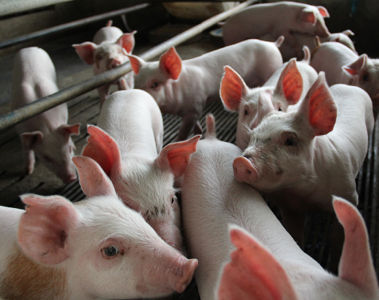Butler, J. E., Weber, P., Sinkora, M., Baker, D., Schoenherr, A., Mayer, B., & Francis, D. (2002). Antibody repertoire development in fetal and neonatal piglets. VIII. Colonization is required for newborn piglets to make serum antibodies to T-dependent and type 2 T-independent antigens. The Journal of Immunology, 169(12), 6822-6830.
Fumess, J. B., Kunze, W. A., & Clerc, N. (1999). Nutrient tasting and signaling mechanisms in the gut. II. The intestine as a sensory organ: neural, endocrine, and immune responses. Am J Physiol, 277, G922-G928.
Li, Y., Guo, Y., Wen, Z., Jiang, X., Ma, X., & Han, X. (2018). Weaning stress perturbs gut microbiome and its metabolic profile in piglets. Scientific reports, 8(1), 18068.
Morris, N. L., & Choudhry, M. A. (2021). Maintenance of gut barrier integrity after injury: Trust your gut microRNAs. Journal of leukocyte biology, 110(5), 979-986.
Oliviero, C., Junnikkala, S., & Peltoniemi, O. (2019). The challenge of large litters on the immune system of the sow and the piglets. Reproduction in Domestic Animals, 54, 12-21.
Père, M. C., & Etienne, M. (2000). Uterine blood flow in sows: effects of pregnancy stage and litter size. Reproduction Nutrition Development, 40(4), 369-382.
Rooke, J. A., & Bland, I. M. (2002). The acquisition of passive immunity in the new-born piglet. Livestock Production Science, 78(1), 13-23.
Smit, M. N., Spencer, J. D., Almeida, F. R. C. L., Patterson, J. L., Chiarini-Garcia, H., Dyck, M. K., & Foxcroft, G. R. (2013). Consequences of a low litter birth weight phenotype for postnatal lean growth performance and neonatal testicular morphology in the pig. Animal, 7(10), 1681-1689.
Stokes, C. R., Bailey, M., Haverson, K., Harris, C., Jones, P., Inman, C., ... & Miller, B. G. (2004). Postnatal development of intestinal immune system in piglets: implications for the process of weaning. Animal Research, 53(4), 325-334.
Upadhaya, S. D., & Kim, I. H. (2021). The impact of weaning stress on gut health and the mechanistic aspects of several feed additives contributing to improved gut health function in weanling piglets—A review. Animals, 11(8), 2418.
Zhang, S., Heng, J., Song, H., Zhang, Y., Lin, X., Tian, M., ... & Guan, W. (2019). Role of maternal dietary protein and amino acids on fetal programming, early neonatal development, and lactation in swine. Animals, 9(1), 19.


